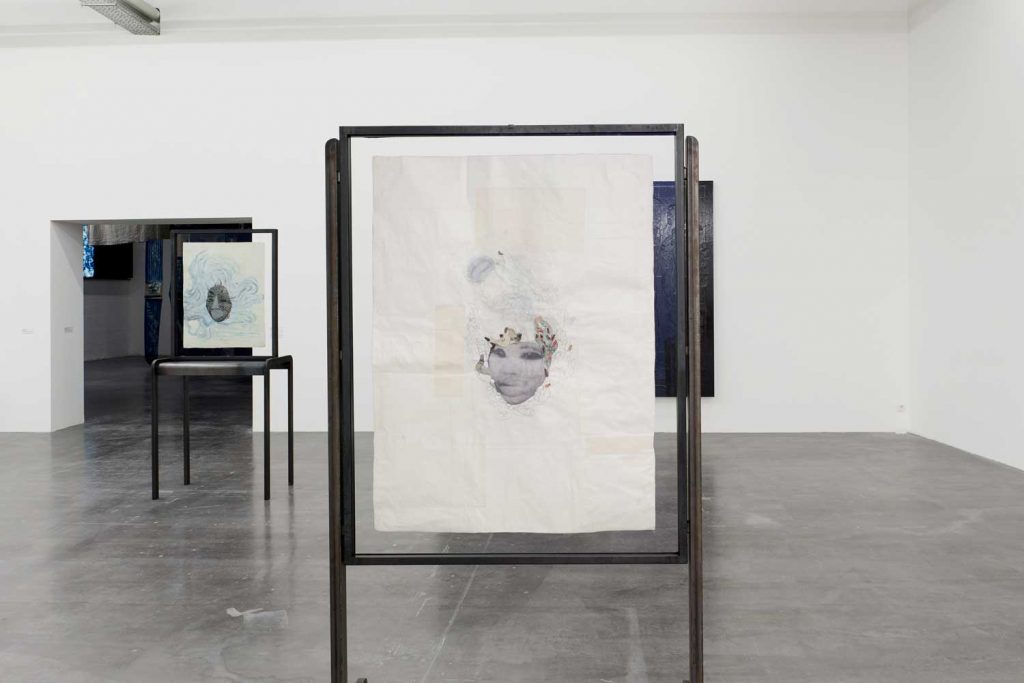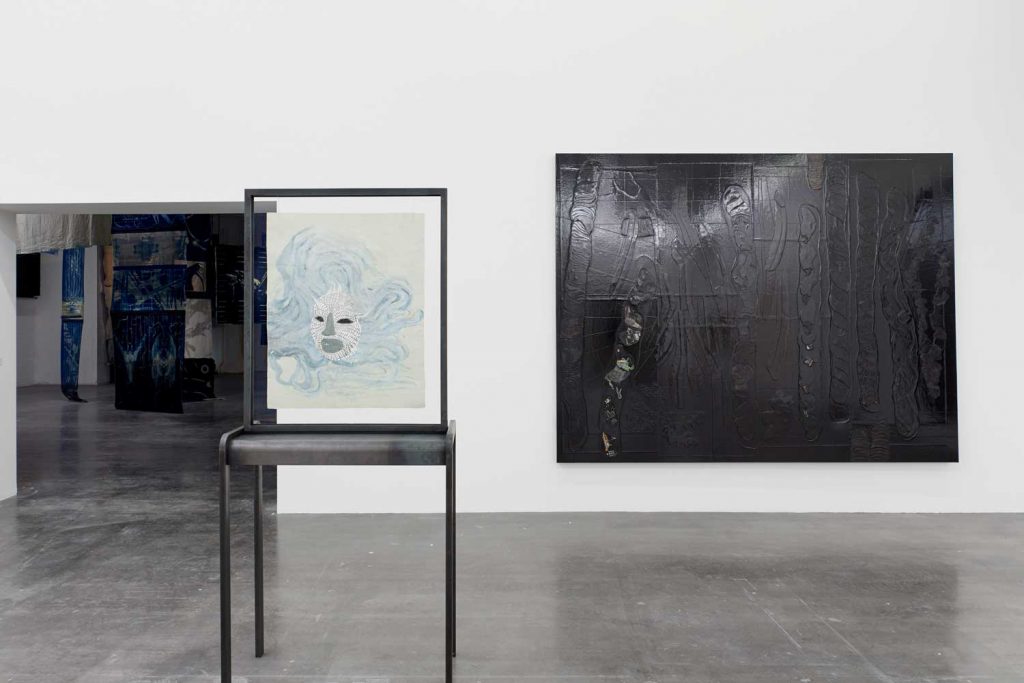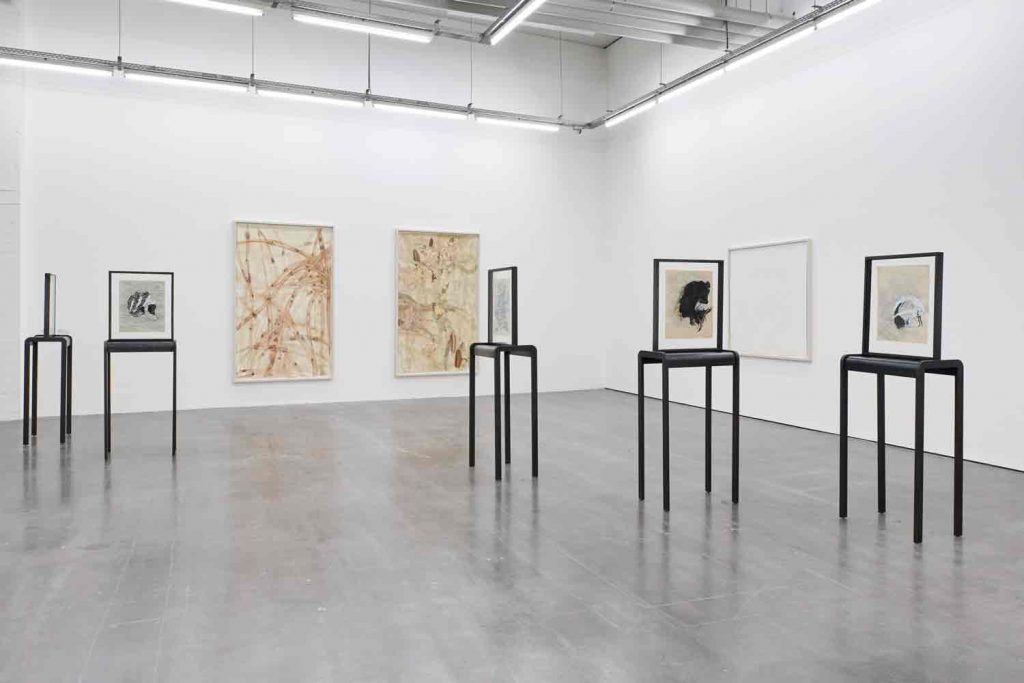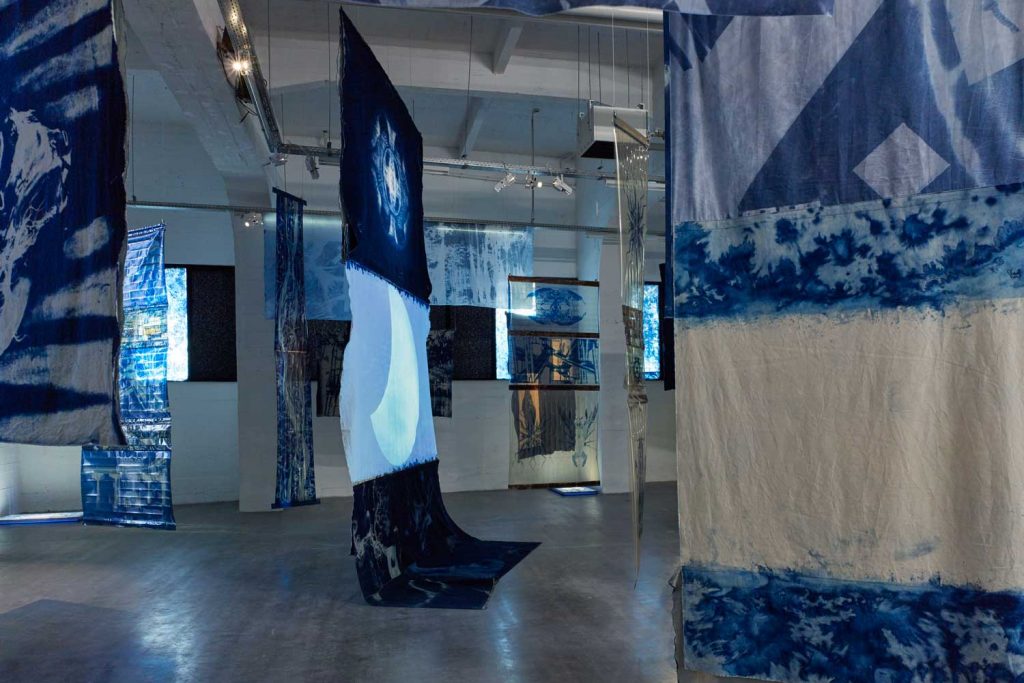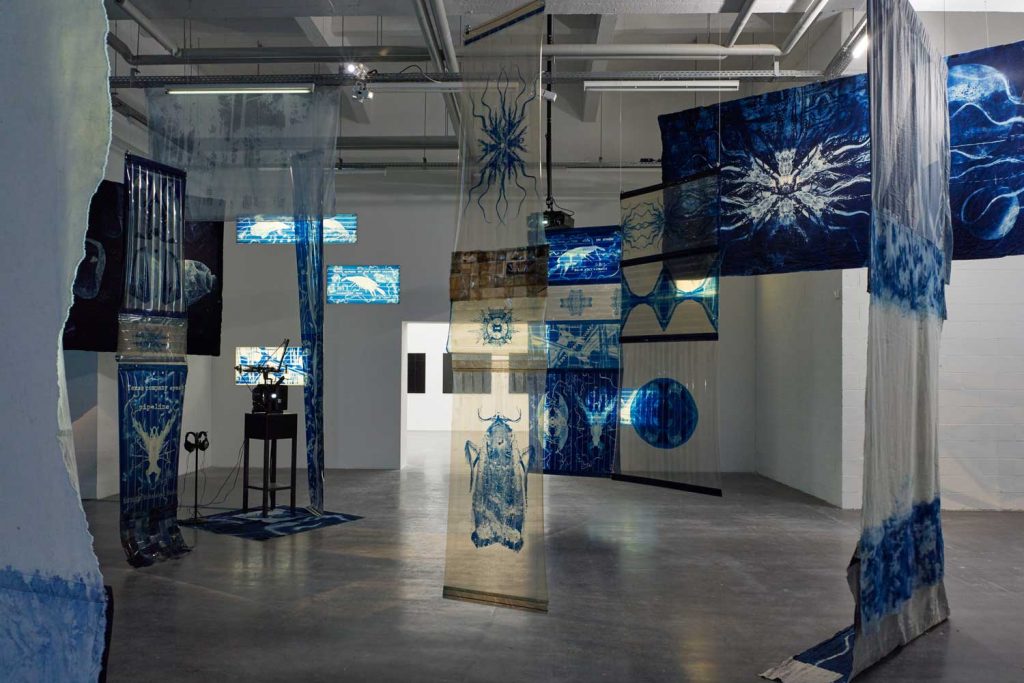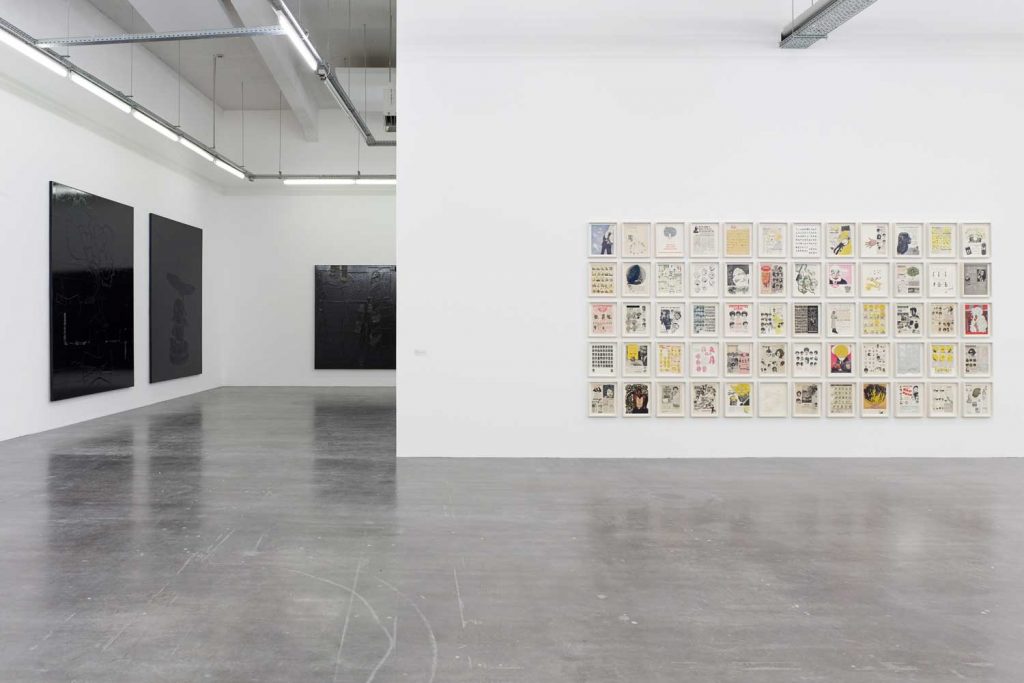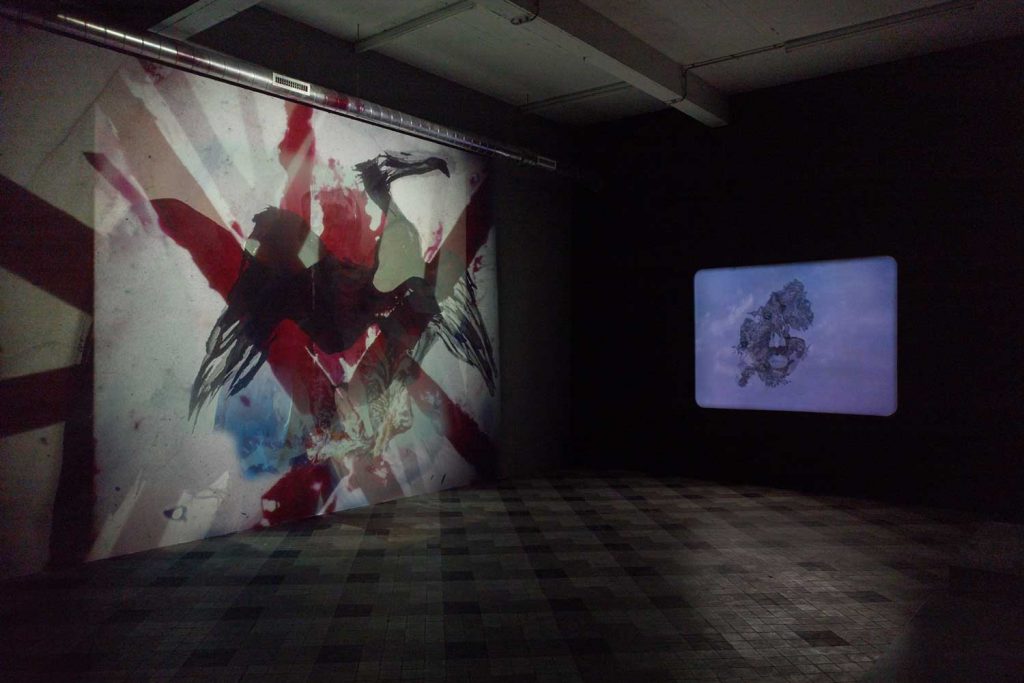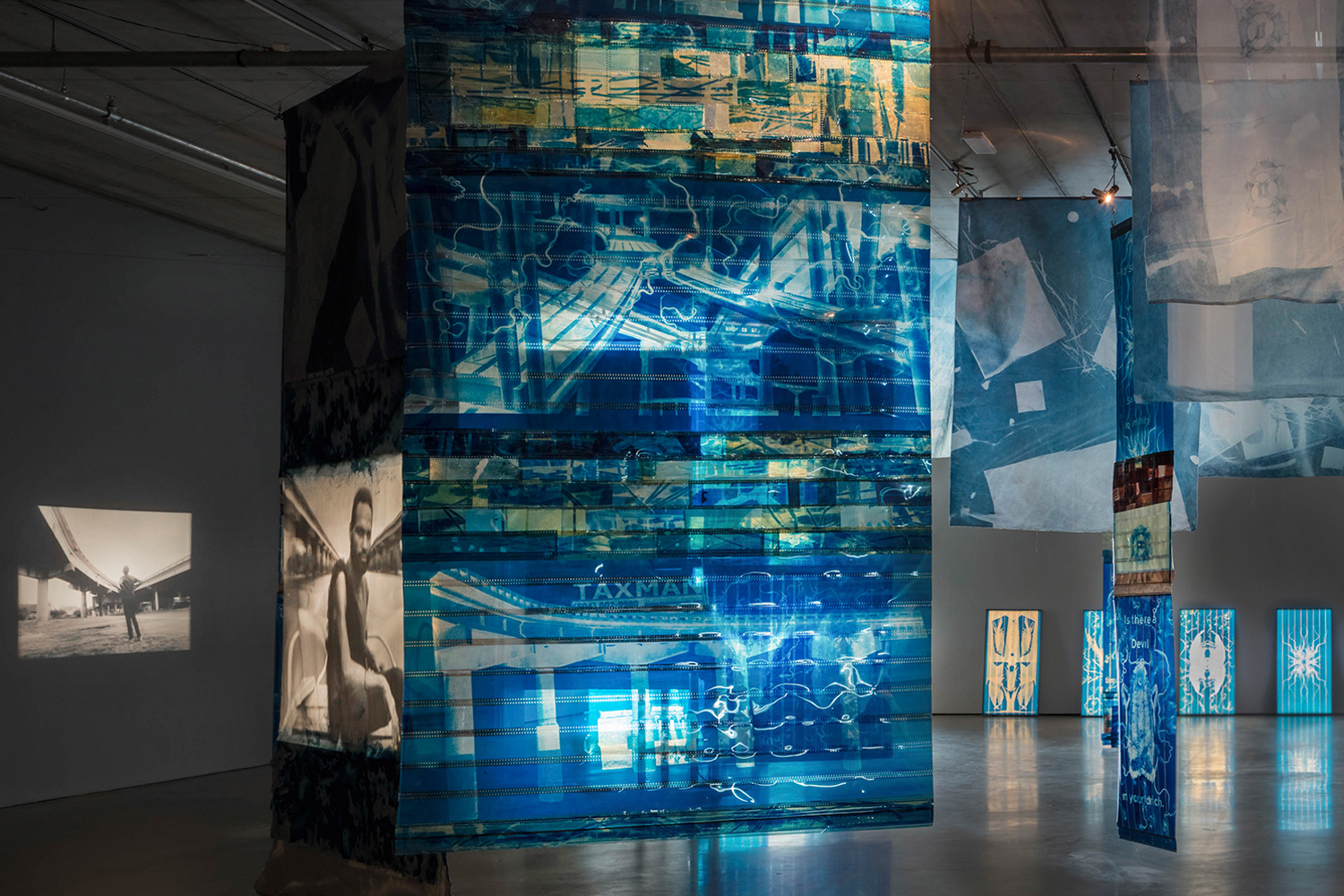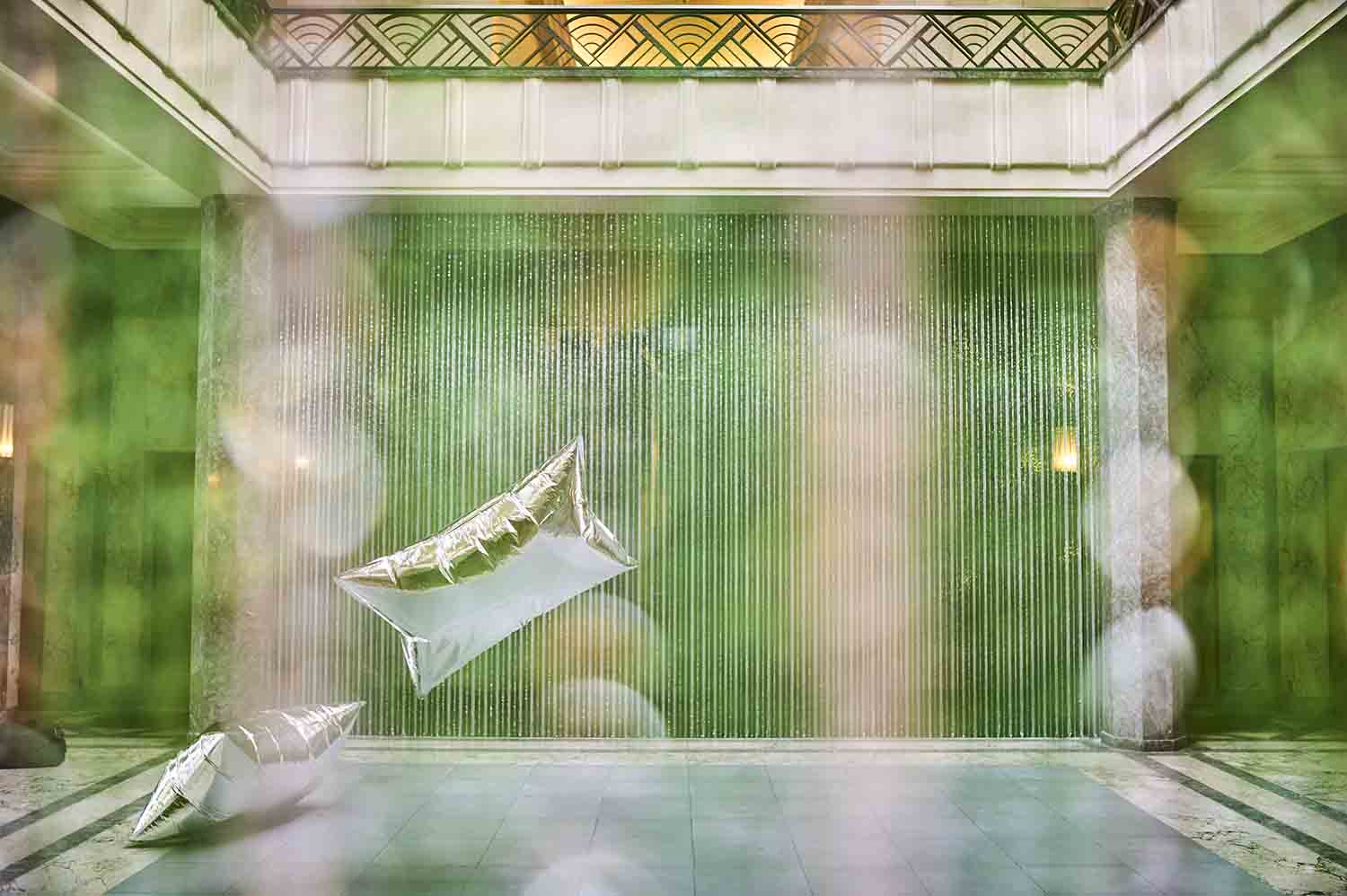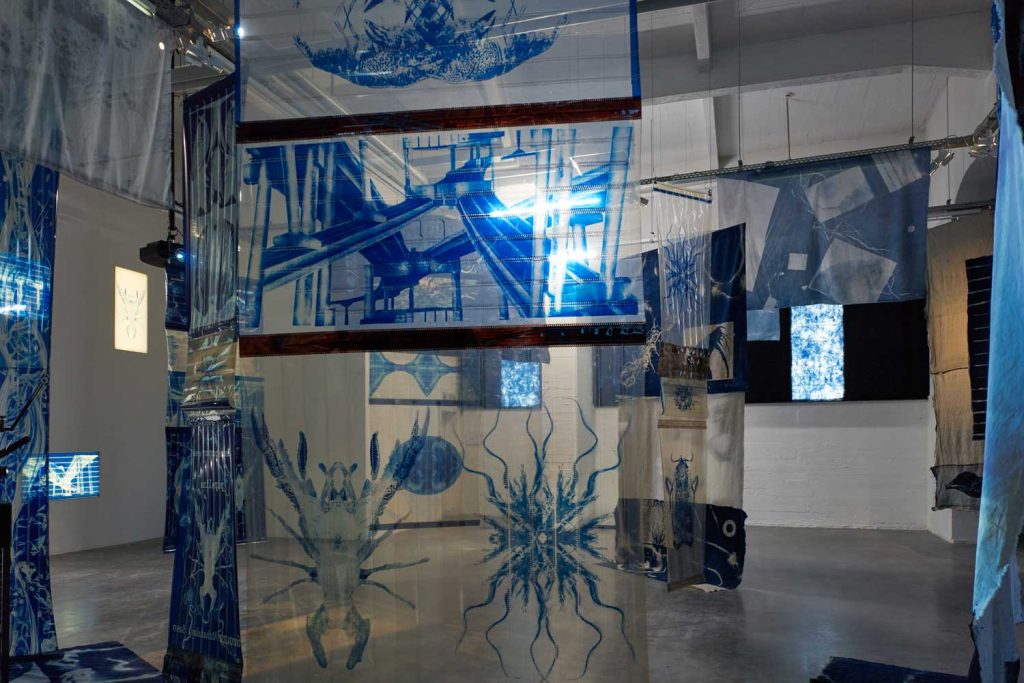
Ellen Gallagher’s first show in Belgium, titled “Liquid Intelligence,” focuses on her collaboration with Dutch photographer Edgar Cleijne, with whom she produced the two film installations on display, Osedax (2010) and the more recent Highway Gothic (2017). The former was named after worms discovered by scientists in the abyss that live by feeding on whale bones. In it, Gallagher use both painted glass-plate slides and 16mm film to create an hypnotic environment in which a psychedelic funk soundtrack plays a key role. The artist has been influenced for years by the mythology of Detroit electro duo Drexciya, based on the existence of a submarine world under the Atlantic, inhabited by the descendants of Africans thrown from slave ships. Highway Gothic, a monumental installation beautifully staged at WIELS, is filled with cyanotype celluloid negatives hanging from the ceiling that present images of underwater organisms. Projected upon two screens, a 16mm film takes the viewer on a boat ride alongside Interstate 10 in New Orleans, a highway whose construction has displaced many black communities. As impressive as it is, Highway Gothic addresses a clear socioeconomic and political issue is such an elusive way that its meaning is difficult to grasp.
The artist has been influenced for years by the mythology of Detroit electro duo Drexciya, based on the existence of a submarine world under the Atlantic, inhabited by the descendants of Africans thrown from slave ships. Highway Gothic, a monumental installation beautifully staged at WIELS, is filled with cyanotype celluloid negatives hanging from the ceiling that present images of underwater organisms. Projected upon two screens, a 16mm film takes the viewer on a boat ride alongside Interstate 10 in New Orleans, a highway whose construction has displaced many black communities. As impressive as it is, Highway Gothic addresses a clear socioeconomic and political issue is such an elusive way that its meaning is difficult to grasp. Although it is presented as a complement to the film installations, the second part of the show gathers a very representative selection of Gallagher’s production over the last twenty years. Here the viewer really perceives how she “works through popular narratives and mythologies of African American histories while also challenges paradigms of modernist painting,” as described in the exhibition’s visitor guide. For DeLuxe (2004–2006), she uses beauty product advertisements targeting African American consumers from the 1930s to the 1970s, covering the eyes and hairstyles of the models with plasticine. The Black Painting series, for which she combines various materials on a canvas covered with a final layer of high-gloss enamel, also contains pages from magazines for black audiences. Part of this series are the four paintings Negroes Battling in a Cave (2016). Its provocative title does not refer to Paul Bilhaud’s 1882 artistic “joke,” but rather to the handwritten inscription found in 2015 on Kasimir Malevich’s 1915 painting Black Square. By denouncing the racist joke (Russian avant-garde specialist Aleksandra Shatskikh “affirmed with absolute conviction” that it had not been written by Malevich), Gallagher questions the concept of “purity” attached to Suprematism.

